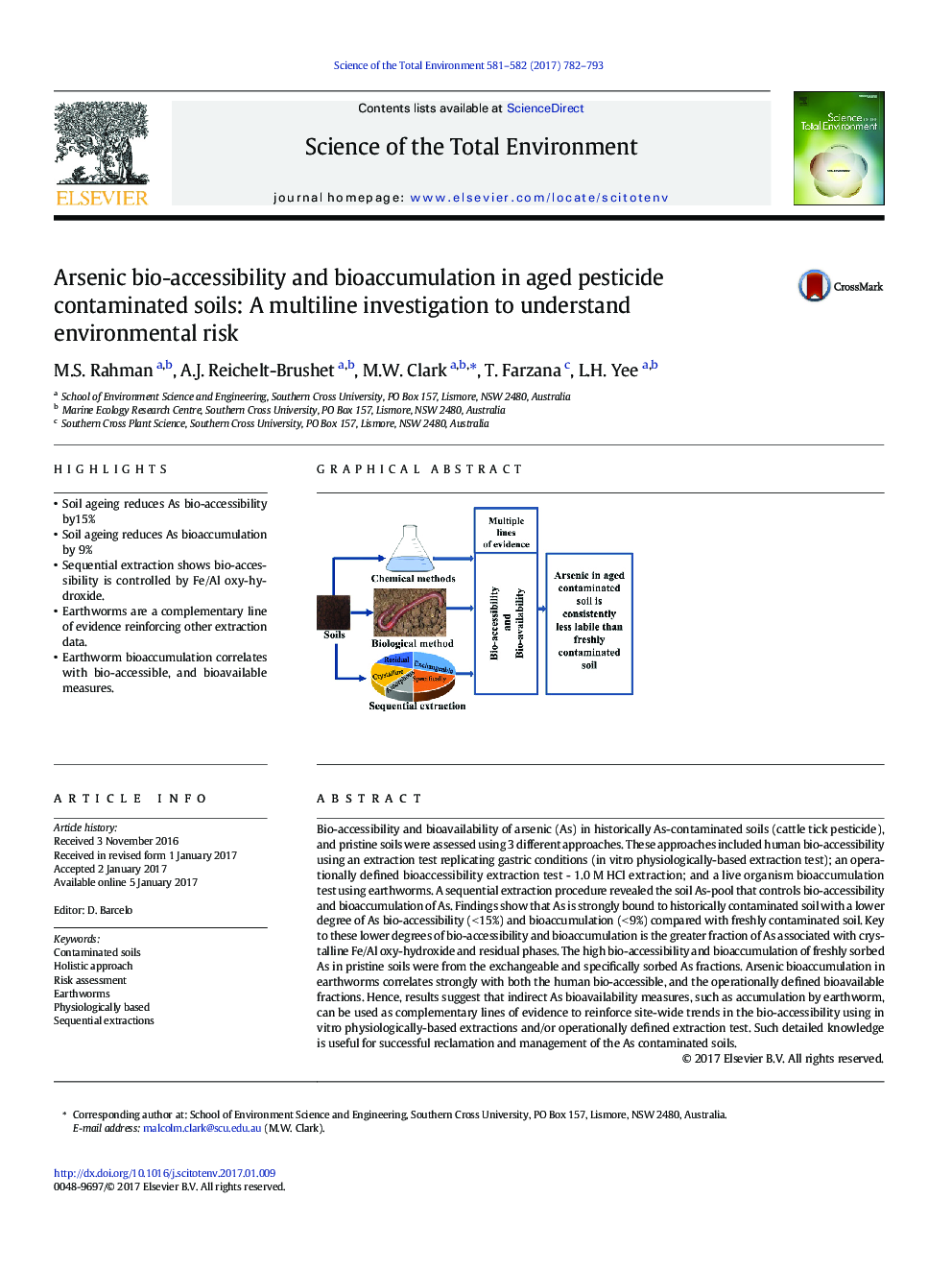| Article ID | Journal | Published Year | Pages | File Type |
|---|---|---|---|---|
| 5751824 | Science of The Total Environment | 2017 | 12 Pages |
â¢Soil ageing reduces As bio-accessibility by15%â¢Soil ageing reduces As bioaccumulation by 9%â¢Sequential extraction shows bio-accessibility is controlled by Fe/Al oxy-hydroxide.â¢Earthworms are a complementary line of evidence reinforcing other extraction data.â¢Earthworm bioaccumulation correlates with bio-accessible, and bioavailable measures.
Bio-accessibility and bioavailability of arsenic (As) in historically As-contaminated soils (cattle tick pesticide), and pristine soils were assessed using 3 different approaches. These approaches included human bio-accessibility using an extraction test replicating gastric conditions (in vitro physiologically-based extraction test); an operationally defined bioaccessibility extraction test - 1.0Â M HCl extraction; and a live organism bioaccumulation test using earthworms. A sequential extraction procedure revealed the soil As-pool that controls bio-accessibility and bioaccumulation of As. Findings show that As is strongly bound to historically contaminated soil with a lower degree of As bio-accessibility (<Â 15%) and bioaccumulation (<Â 9%) compared with freshly contaminated soil. Key to these lower degrees of bio-accessibility and bioaccumulation is the greater fraction of As associated with crystalline Fe/Al oxy-hydroxide and residual phases. The high bio-accessibility and bioaccumulation of freshly sorbed As in pristine soils were from the exchangeable and specifically sorbed As fractions. Arsenic bioaccumulation in earthworms correlates strongly with both the human bio-accessible, and the operationally defined bioavailable fractions. Hence, results suggest that indirect As bioavailability measures, such as accumulation by earthworm, can be used as complementary lines of evidence to reinforce site-wide trends in the bio-accessibility using in vitro physiologically-based extractions and/or operationally defined extraction test. Such detailed knowledge is useful for successful reclamation and management of the As contaminated soils.
Graphical abstractDownload high-res image (208KB)Download full-size image
